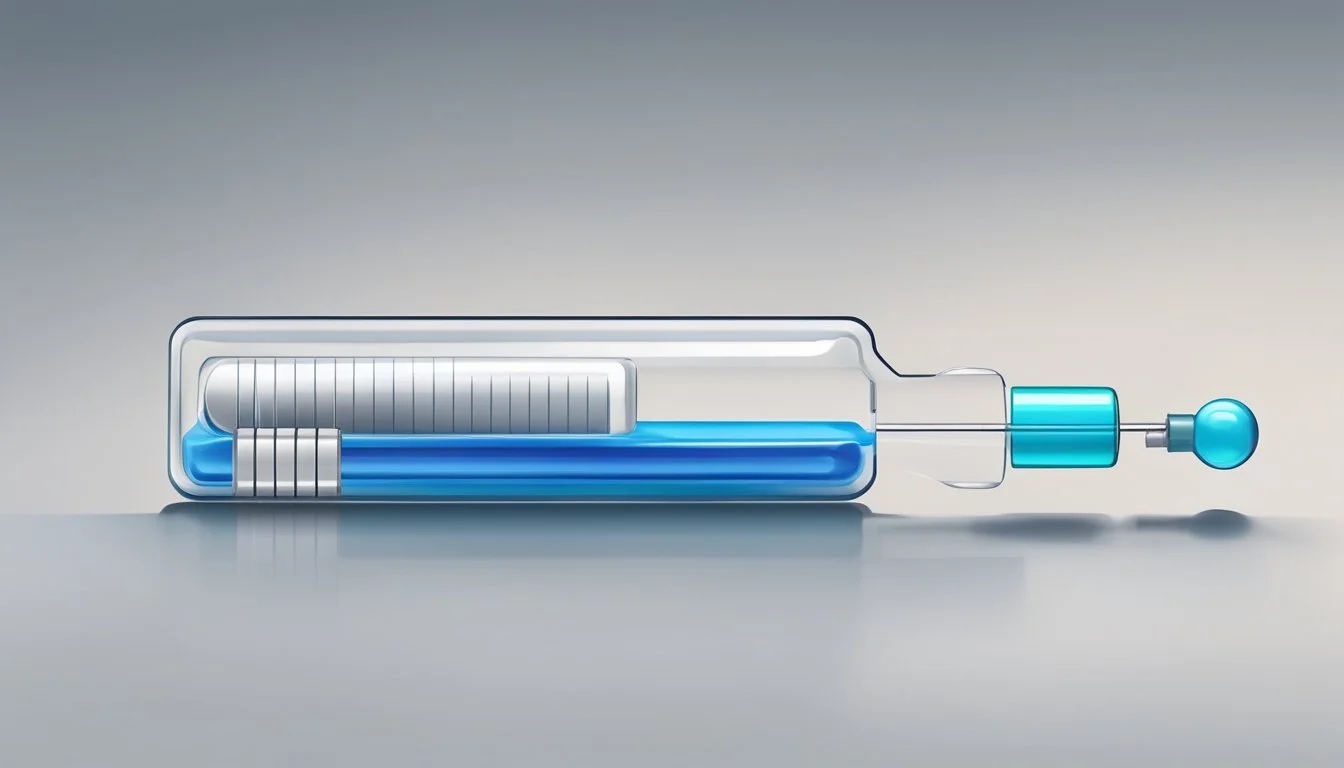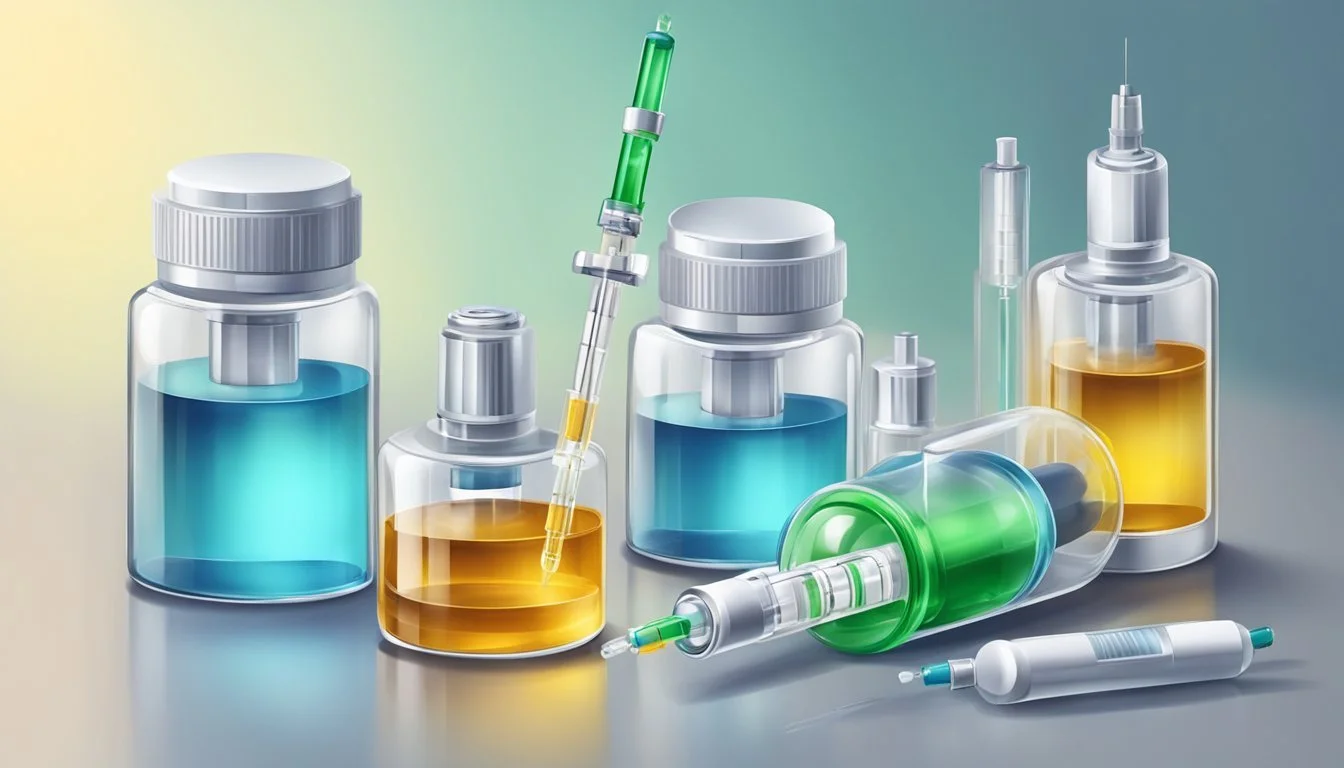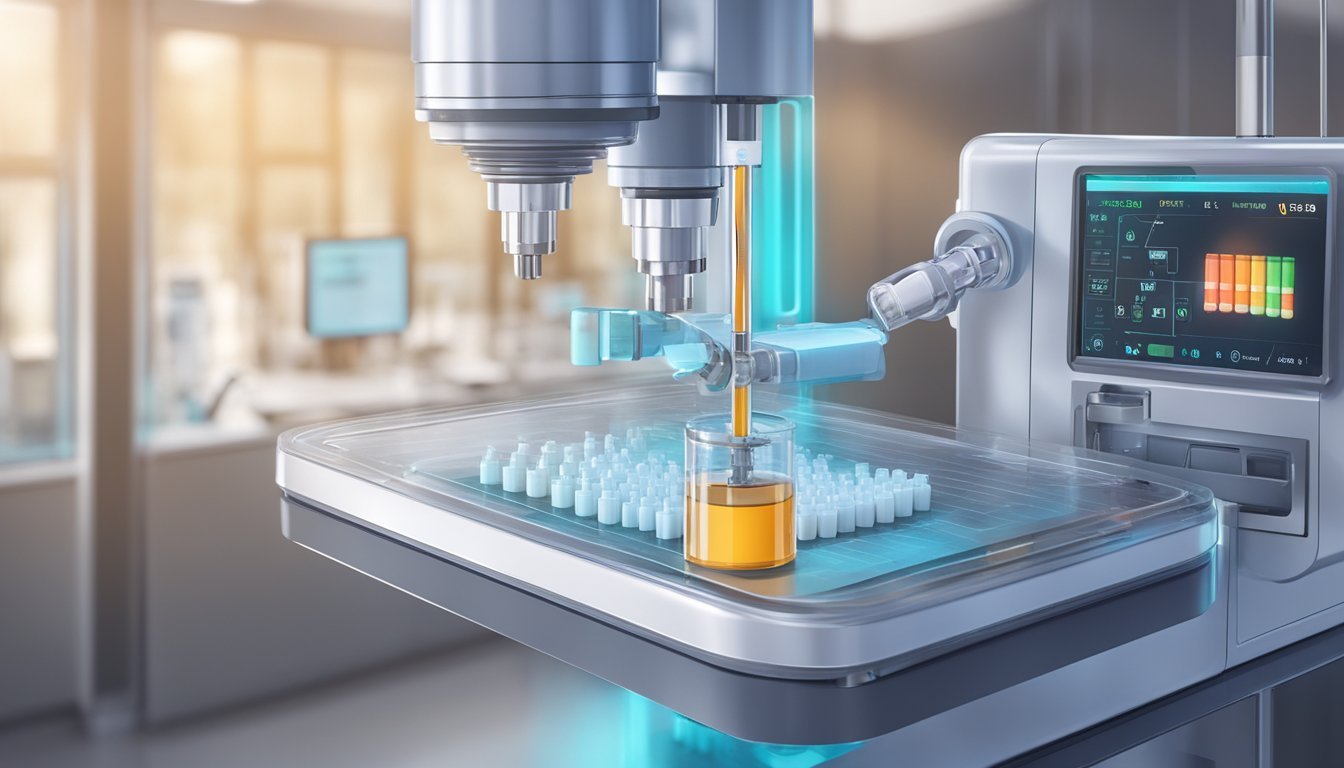The Ultimate Guide to Using an Automatic Syringe
Streamline Your Homestead's Healthcare Practices
Administering vaccines is a critical routine on any homestead where animals are kept, ensuring the health and well-being of livestock and pets. Automatic syringes have revolutionized this task by allowing for precise dosage and more efficient delivery of both vaccines and medications. These instruments play a significant role in disease prevention programs, which are essential in managing a successful and sustainable homestead.
The use of automatic syringes streamlines the vaccination process. It provides a level of consistency and accuracy that is challenging to achieve with manual injections. Homesteaders can adjust the dosage for different types of animals with ease, and the reduced handling stress for both the animals and the administrator is an added benefit. Proper use of these devices not only helps maintain animal health but also safeguards the larger community by preventing the spread of zoonotic diseases.
Incorporating automatic syringes into regular animal care practices calls for a comprehensive understanding of their mechanics and appropriate use. This includes knowing how to maintain sterility, handle the vaccine correctly, and dispose of needles and syringes following safety protocols. Equipping oneself with this knowledge ensures that vaccines are administered effectively and safely, maximizing the investment in both the syringe technology and the vaccines themselves.
Understanding Vaccines and Immunization
Vaccines are integral to preventing a range of infections by preparing the body's immune system. They are among the most effective tools for protecting against vaccine-preventable diseases such as measles, hepatitis, and influenza.
Types of Vaccines
Live Attenuated Vaccines (LAV): These vaccines use a weakened form of the germ that causes the disease. They elicit a strong and lasting immune response. Examples include the MMR (measles, mumps, and rubella) and the MMRV (measles, mumps, rubella, and varicella) vaccines.
Inactivated Vaccines: These vaccines are made from a germ that has been killed. They often require multiple doses to maintain immunity. The hepatitis A and the flu vaccines are examples of inactivated vaccines.
Subunit, Recombinant, Polysaccharide, and Conjugate Vaccines: These use pieces of the germ—either its protein, sugar, or capsid. For example, the pneumococcal conjugate vaccine protects against pneumococcal disease.
Messenger RNA (mRNA) Vaccines: A newer technology used in some COVID-19 vaccines, mRNA vaccines introduce a piece of genetic material to stimulate an immune response without using a live virus that causes COVID-19.
The Science Behind Immune Response
Immune Response Mechanism: When a vaccine is introduced into the body, it stimulates the immune system to recognize and remember the pathogen as a threat. This prepares the immune system to fight the disease in the future.
Adjuvants are included in some vaccines to enhance the body's immune response. These substances help stimulate the immune system and improve vaccine efficacy. For instance, they can increase the immune response so that the body builds stronger defenses against the virus.
Vaccine Absorption and Lymphatic Circulation: Once administered, the vaccine's antigens are absorbed into the bloodstream or lymphatic system. Lymphatic circulation plays a critical role in transporting these antigens to the lymph nodes, where they trigger the immune response. The hepatitis B vaccine is an example that relies on good vaccine absorption to be effective.
It's essential for healthcare professionals to understand the various vaccine types, their absorption, and the immune responses generated to educate patients and maximize the benefits of immunization.
Choosing the Right Syringe and Needle
Selecting the appropriate syringe and needle is crucial for effective vaccine and medication administration on a homestead. The choice depends on factors such as the administration route, the volume of medication, and the physical characteristics of the recipient.
Types of Syringes and Needles
Syringes come in various types such as prefilled syringes, which contain a single dose of medication, and multidose vials, which require a specific syringe and needle for administration. Syringes are typically available in different sizes, including but not limited to 1 ml and 3 ml, to accommodate the volume of medication to be administered. For vaccines, a low dead-volume syringe can be used to minimize waste.
Needles have three critical attributes: size, length, and gauge. The size refers to the inner diameter, impacting the flow of medication. The length of the needle is essential for reaching into the different layers of tissue, such as subcutaneous, intramuscular, or intradermal layers. The gauge, which is a measure of the needle's thickness, influences the ease of insertion and comfort during administration. A higher gauge number indicates a thinner needle.
Determining Needle Size and Length
The correct needle size and length depend on various factors:
Administration Route: For subcutaneous injections, typically a 5/8" needle with a 25 to 27 gauge is sufficient. Intramuscular injections require longer needles, commonly 1" to 1.5" in length, with a gauge of 22 to 25, depending on the viscosity of the medication and the client's muscle mass. Intradermal injections necessitate the shortest needles.
Client’s Age and Size of Muscle Mass: A smaller gauge and shorter length may be suitable for infants and small children, whereas adults may require longer and larger gauge needles, particularly for intramuscular injections.
Viscosity: Thicker medications require needles with a wider bore, meaning a smaller gauge number, to allow the substance to flow through smoothly.
When selecting a needle for vaccine administration, refer to reliable guidelines to ensure the needle is appropriate for the vaccine's viscosity and recommended administration route.
Table: Needle Selection by Route and Patient Characteristics
Subcutaneous: Needle Length - 5/8", Needle Gauge - 25-27 G, Patient Characteristics - All ages; small volume required
Intramuscular: Needle Length - 1" - 1.5", Needle Gauge - 22-25 G, Patient Characteristics - Adult; large muscle mass
Intradermal: Needle Length - 1/4" - 1/2", Needle Gauge - 26-28 G, Patient Characteristics - Skin tests; small volume required
Vaccine Administration Techniques
Effective vaccine administration is a critical part of healthcare on a homestead. Proper techniques ensure the safety and efficacy of vaccines given to individuals. The following subsections discuss essential steps and methods to be adhered to during the vaccination process.
Preparing for Injection
Before administering any vaccine, one must confirm the correct vaccine and dose for the individual. The healthcare professional should perform hand hygiene before preparing the vaccine, whether with soap and water or an alcohol-based hand rub. The use of gloves depends on the likelihood of coming into contact with bodily fluids; if used, they should be changed between patients. Topical anesthetics may be applied prior to injection to manage procedural pain, ensuring the patient is as comfortable as possible.
Hand hygiene: This is the first and foremost step to prevent contamination.
Gloves: Their usage is situation-dependent but recommended if there is a potential for hand contamination.
Injection Methods
Injections are largely given via three main routes: intramuscular (IM), subcutaneous (SC), and intradermal (ID). Each method has a specific technique:
Intramuscular: A swift, deep injection into the muscle allowing for rapid absorption.
Subcutaneous: Administered into the subcutaneous tissue, which has less blood flow than muscle tissue.
Intradermal: Placement is just under the skin and is typically used for tuberculosis testing or allergy tests.
Intramuscular injections deliver the vaccine directly into muscle tissue, permitting rapid uptake into the bloodstream. In contrast, subcutaneous injections are introduced into the layer of subcutaneous tissue where slower absorption occurs, and intradermal injections are for vaccine delivery just beneath the skin.
Injection speed: Rapid for IM, moderate for SC, and slow for ID to reduce tissue damage.
Needle selection: Depends on the route of administration, age, and body mass of the patient.
Injection Sites
Selecting the proper injection site is pivotal for effective vaccine delivery and depends on the method and age of the patient. The deltoid muscle of the upper arm is preferred for IM injections for most adults and older children, whereas the anterolateral thigh is used for young children and infants. For SC injections, the upper triceps area or the outer aspect of the upper arm are common sites. ID injections are usually administered in the forearm.
Intramuscular Sites:
Deltoid muscle: Suitable for adults and older children.
Anterolateral thigh: Preferred for infants and small children.
Subcutaneous Sites:
Outer aspect of upper arm: Ideal for SC injections.
Upper triceps area: An alternative site for SC administration.
For delivering multiple injections at a single appointment, it is crucial to separate the injection sites by at least 1 inch to prevent cross-reactivity and reduce discomfort. The choice of the site also influences vaccine dose uptake and minimizes potential tissue damage.
Managing Adverse Reactions and Complications
When administering vaccines and medications with an automatic syringe on a homestead, it's critical to effectively manage any adverse reactions that may occur. This includes recognizing common reactions, understanding their causes, and responding appropriately to reduce discomfort and prevent complications.
Common Injection Site Reactions
Subcutaneous and intramuscular injections, the most common methods for vaccine and medication administration, can lead to several injection site reactions. These reactions typically involve:
Swelling: A mild and common response, often resulting from fluid accumulation.
Redness: A sign of local inflammation as the body signals increased blood flow.
Inflammation: In response to the introduction of a foreign substance.
Pain: Usually mild and short-lived, but varies depending on the injection technique and the substance administered.
Rarely, granulomas or nodules may form when the body walls off the substance injected into deep tissue. Proper injection technique, such as avoiding underlying bone and nerves, reduces the risk of such local adverse reactions.
Local and Systemic Adverse Reactions
Local adverse reactions may include transient redness and swelling at the injection site, occasionally spreading to the deep tissue. To manage these reactions:
Apply a cold compress to reduce swelling.
Provide over-the-counter pain relief if necessary.
Monitor the site for signs of severe or persistent inflammation.
Systemic adverse reactions can have broader effects, including:
Fever: A common and expected response indicating immune activation.
Allergic reactions: These range from mild reactogenicity to serious anaphylactic events. Recognizing symptoms early and having epinephrine accessible can be life-saving.
Fainting (syncope): Sometimes associated with fear of injections, it's important to have individuals sit or lie down during and shortly after the injection.
By anticipating and recognizing injection site reactions and systemic effects, those managing homestead vaccinations can ensure the safety and comfort of individuals receiving care.
Special Considerations for Different Age Groups
Administering vaccines and medications accurately is critical to ensure vaccine efficacy and minimize procedural pain. It is imperative to consider age-specific factors such as recommended route, site of administration, and weight-based recommendations.
Vaccinating Infants and Young Children
In infants and young children, proper vaccine administration is vital to maximize vaccine efficacy and minimize discomfort. For newborns and young infants, the anterolateral aspect of the thigh is the preferred site for intramuscular injections due to the larger muscle mass, which can accommodate the volume of the vaccine. In comparison, preterm infants may require special consideration due to their lower muscle mass and potential for altered immunologic responses.
Route: Intramuscular (IM) is typical for vaccines such as DTaP.
Site: Anterolateral thigh muscle.
Procedural Pain Management: Use of topical anesthetics, sweet solutions, and proper swaddling techniques.
Healthcare providers are advised to adhere to weight-based recommendations to determine the appropriate needle length for intramuscular injections, ensuring efficient vaccine delivery and reduced procedural pain.
Vaccinating Adolescents and Adults
As individuals grow, changes in muscle mass and the immune system have implications for vaccine administration. Adolescents and adults have different recommendations for the site of administration, typically shifting to the deltoid muscle of the arm, given its accessibility and adequate muscle mass.
Route: Intramuscular (IM) or Subcutaneous (SC), based on the specific vaccine.
Site: Deltoid muscle is preferred for older children, adolescents, and adults.
Procedural Pain Management: Communication about what to expect during the injection and proper technique to reduce anxiety and discomfort.
For vaccines that require multiple doses, such as the human papillomavirus (HPV) vaccine for adolescents, maintaining precise scheduling is crucial to achieve optimal immunization results. Providers must ensure they follow the recommended vaccine schedules and employ methods to alleviate procedural pain and anxiety, fostering a positive vaccination experience.
Compliance with Vaccination Guidelines
Adhering to established vaccination guidelines ensures safe and effective vaccine administration. Both healthcare professionals and homesteaders should abide by national and international standards while incorporating safe medication practices to minimize risks associated with vaccine handling and administration.
National and International Standards
Vaccination protocols are rigorously outlined by bodies such as the Centers for Disease Control and Prevention (CDC) and the Canadian Immunization Guide provided by the Government of Canada. Adherence to these standards ensures consistent and effective immunization practices. For instance, the CDC's guidelines detail the recommended administration route and site for each vaccine, a critical factor for vaccine efficacy. Health professionals must also consider clinical judgement when adhering to these guidelines, as individual patient needs may vary.
Table 3.3 and images 3.2 from the guidelines serve as essential references for correct vaccine administration techniques, including needle angle and injection site. Ensuring vaccines are administered according to these protocols is crucial for the safety and health of the individual receiving the vaccine.
Safe Medication Practices
The Institute for Safe Medication Practices (ISMP) emphasizes the importance of maintaining safe medication practices. These practices not only pertain to drug prescriptions but also to vaccine administration. Vaccine administration errors can be prevented by following the ISMP's protocols, such as performing hand hygiene before vaccinations and using a quick, smooth motion during injection as recommended by professionals.
Healthcare professionals must always use sterile syringes and needles, follow proper storage guidelines, and ensure they are familiar with emergency procedures in the event of adverse reactions post-vaccination, including the administration of epinephrine. Safe medication practices are fundamental in any setting, be it a medical facility or a homestead, to prevent harm and ensure the efficacy of the administered vaccines or medications.
Technological Advances in Vaccine Delivery
In the realm of homesteading, the ongoing evolution of vaccine delivery technologies has made administering vaccines and medications more efficient and effective. These advancements aim to enhance vaccine efficacy and mitigate cross-contamination risks.
Alternative Routes of Vaccine Administration
Oral Route: Traditionally associated with the administration of polio vaccines, the oral route allows for the delivery of live attenuated vaccines without the use of needles. This method reduces the risk of cross-contamination and simplifies mass vaccination programs.
Intranasal Route: The intranasal route offers a non-invasive and needle-free alternative for administering certain vaccines such as influenza vaccines (FluMist Quadrivalent). It's especially useful in improving vaccine uptake among populations that fear injections.
Subcutaneous Route (SC): Utilized for vaccines such as Varivax (chickenpox vaccine), the subcutaneous route involves administering the vaccine into the fat layer beneath the skin. This approach facilitates slow and sustained absorption of the vaccine.
Intramuscular Route (IM): Vaccines like influenza and tetanus are often administered via the intramuscular route, where the vaccine is injected directly into the muscle, allowing for rapid uptake and effective response.
Innovations in Vaccine and Syringe Design
Prefilled Syringes: Companies are now producing prefilled syringes, with the vaccine preloaded in the exact dosage, effectively reducing vaccine waste and enhancing vaccination efficiency. Organizations like BD provide various prefilled syringe options for different vaccines.
Needle-Free Systems: Innovations have led to the development of jet injectors and microneedle patches that deliver vaccines without traditional needles, thus minimizing pain and the potential for needle-stick injuries.
By integrating these technological advancements, homesteaders can ensure a higher standard of healthcare for their animals, improving medication administration safety and efficacy.
Ensuring Best Practices During and After a Pandemic
During a pandemic, it is crucial to implement effective vaccination strategies and to utilize the learnings from past health crises to ensure the well-being of both livestock and humans on a homestead. It necessitates meticulous planning and execution by healthcare professionals.
Learnings from the COVID-19 Pandemic
The COVID-19 pandemic has underscored the importance of quick response and adaptability in healthcare practices. Key learnings include:
Establishing Protocols: Immediate establishment of protocols based on the latest research for the administration of vaccines is critical. This includes understanding the correct dosage, scheduling, and handling of vaccines.
Health System Preparedness: Building a resilient health system capable of rapid vaccine delivery and management can prevent the spread of disease. This should involve adequate training of healthcare professionals in vaccine administration and ensuring a protocol is in place for maintaining supplies and equipment, such as automatic syringes.
Vaccination Strategies in Emergent Situations
An emergent situation demands a robust vaccination strategy. Here are some specific strategies:
Prioritization of High-risk Individuals: Identifying and prioritizing higher-risk groups ensure prompt protection of those most vulnerable to the virus.
Community Outreach and Education: Building awareness within the homestead and surrounding community about the benefits of vaccination helps to increase uptake.
Record-Keeping and Monitoring: Maintaining accurate records of vaccinations is essential for tracking vaccine efficacy and scheduling follow-up doses.
Effective use of an automatic syringe plays a crucial role in maintaining the integrity of vaccinations during a pandemic. Its use promotes efficiency, consistency in dosages, and safety for both the administrator and the recipient.







